If you can’t decide between playing a melee character or a spellcaster, why not get the best of both worlds with the Eldritch Knight Fighter in D&D 5e?
Focusing on the offensive and defensive schools of magic, the Eldritch Knight mixes a practical knowledge of magic with their formidable physical capabilities.
What results is a unique powerhouse of a subclass that’s capable of doing quite a lot!
Do you wish to master both sword and sorcery on your quest?
Begin your training now!
This is the full subclass guide to the Eldritch Knight Fighter in D&D 5e!
What is the Eldritch Knight Fighter in D&D 5e?
Eldritch Knight Fighters in D&D 5e are masters of combining martial prowess and magic in combat.
While this isn’t the only subclass in D&D 5e that does this, the Eldritch Knight distinguishes itself by being a Fighter first and foremost.
By that, I mean that these characters are hardy and durable.
They might not have the spell selection of similar subclasses, but they more than make up for that with their ability to hold their ground in melee combat for extended periods of time.
Eldritch Knights specifically focus on spells from the schools of Abjuration and Evocation. This means that they have plenty of magical options for both defense and offense as the situation requires.
The Eldritch Knight Fighter can be found in the 5e Player’s Handbook. It appears alongside the Battlemaster and Champion subclasses.
Role in the Party
Mixing martial prowess and spellcasting, the Eldritch Knight Fighter is what we call a “Gish”. They’re remarkably durable and are more than capable of holding their own in combat.
While they especially excel at melee combat and holding the party’s front lines, their exact role is heavily determined by the spells they choose.
Generally speaking, Eldritch Knights are at their best when they’re using their spellcasting to boost their martial abilities.
While they can pick up some tried-and-true spells to blast their foes to bits, they do run the risk of spreading themselves too thin.
Where something like a Bladesinger, for example, is a Wizard who can better perform in melee combat, the Eldritch Knight is still a Fighter but with extra options presented by their spellcasting ability.
Spells that improve their combat performance are generally a high priority. Though having a reliable ranged spell attack and/or some extra arcane utility is also very handy as well!
The trick to carving out how you play your role in the party lies in making strategic decisions when you learn new spells. Every spell MUST serve a clear purpose.
Keep a balanced approach in how you build and play your Eldritch Knight and your enemies will stand no chance!
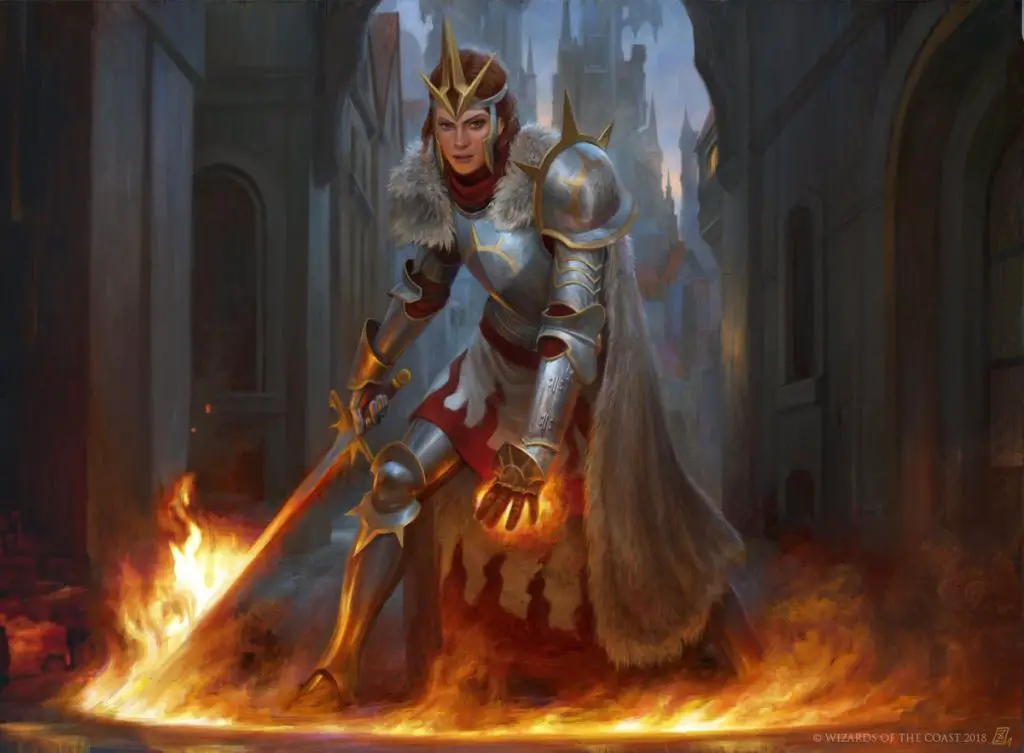
Spellcasting for Eldritch Knight Fighters Explained
The Eldritch Knight Fighter’s spellcasting can seem pretty confusing at first, and, to be fair, it kind of is.
But before we go into the details about the Eldritch Knight’s subclass features, we have to cover how their spellcasting works.
Thankfully, learning the key fundamentals should be enough to help you with most questions that you might have.
I’d also recommend checking out my article that covers the best spells for Eldritch Knight Fighters in D&D 5e. That gives you more information about the best spells to consider and why they’re worth taking.
Of course, I’m always happy to help you out if you still have questions that this guide doesn’t address. Just leave me a comment and I’ll get back to you!
That said, let’s dive in!
Spell Slots and Spells Known
The Eldritch Knight spellcasting table (below) shows you how many spells you know and spell slots you have at each level upon choosing this subclass.
The spells that you choose come from the Wizard spell list. Thankfully, that’s an incredibly powerful list with loads of fantastic options.
When you choose this subclass at level 3, you learn two cantrips from the Wizard spell list. At level 10, you gain another one.
Additionally, you get three level 1 wizard spells. Two of those must be either Abjuration or Evocation spells.
The table also shows when you gain more spells known.
Spells that you learn must be from either the Abjuration or Evocation school. The only exceptions to this are the spells that you learn at levels 8, 14, and 20 which can come from any school.
Related: The Schools of Magic in D&D 5e
Additionally, a spell that you learn must be of a level for which you have spell slots. (For example, you cannot learn level 2 spells until you hit level 7.)
But what if you find yourself regretting picking a certain spell?
You can swap out one of the Wizard spells that you know when you gain a new Eldritch Knight Fighter level.
As before, the spell that you choose must be of a level that you have spell slots for and come from the abjuration or evocation school.
However, replacing a spell that you gained at levels 8, 14, or 20 allows you to pick a new spell from any school. (It’s a good idea to keep track of what spells you gain at those levels!)
Last but not least, note that Eldritch Knight Fighters don’t have access to ritual casting. You’ll be using spell slots for whatever you cast.
The Eldritch Knight Fighter Spellcasting Table
Your spells are your most important resource as an Eldritch Knight Fighter. This table will break down what spells and spell slots are available to you at each level.
| Fighter Level | Cantrips Known | Spells Known | Level 1 Spell Slots | Level 2 Spell Slots | Level 3 Spell Slots | Level 4 Spell Slots |
| 3 | 2 | 3 | 2 | – | – | – |
| 4 | 2 | 4 | 3 | – | – | – |
| 5 | 2 | 4 | 3 | – | – | – |
| 6 | 2 | 4 | 3 | – | – | – |
| 7 | 2 | 5 | 4 | 2 | – | – |
| 8 | 2 | 6 | 4 | 2 | – | – |
| 9 | 2 | 6 | 4 | 2 | – | – |
| 10 | 3 | 7 | 4 | 3 | – | – |
| 11 | 3 | 8 | 4 | 3 | – | – |
| 12 | 3 | 8 | 4 | 3 | – | – |
| 13 | 3 | 9 | 4 | 3 | 2 | – |
| 14 | 3 | 10 | 4 | 3 | 2 | – |
| 15 | 3 | 10 | 4 | 3 | 2 | – |
| 16 | 3 | 11 | 4 | 3 | 3 | – |
| 17 | 3 | 11 | 4 | 3 | 3 | – |
| 18 | 3 | 11 | 4 | 3 | 3 | – |
| 19 | 3 | 12 | 4 | 3 | 3 | 1 |
| 20 | 3 | 13 | 4 | 3 | 3 | 1 |
Spellcasting Ability
Intelligence is your spellcasting ability as an Eldritch Knight Fighter.
This means that any spell that uses your spellcasting ability modifier for a spell attack will be based on your Intelligence score.
Your spell attack modifier is calculated as:
Spell Attack modifier = your proficiency bonus + your Intelligence modifier
So for a spell like Fire Bolt, you would roll your d20 and add the Spell Attack modifier to that roll. If it meets or beats the target’s armor class, you roll damage.
Additionally, your Intelligence determines the save DC that enemies must meet or exceed against your spells. That spell save DC is calculated as follows:
Spell Save DC = 8 + your proficiency bonus + your Intelligence Modifier
Because your spells are so dependent on your Intelligence score, you want to make sure that you’re investing in your Intelligence. Otherwise, your spellcasting will suffer greatly!
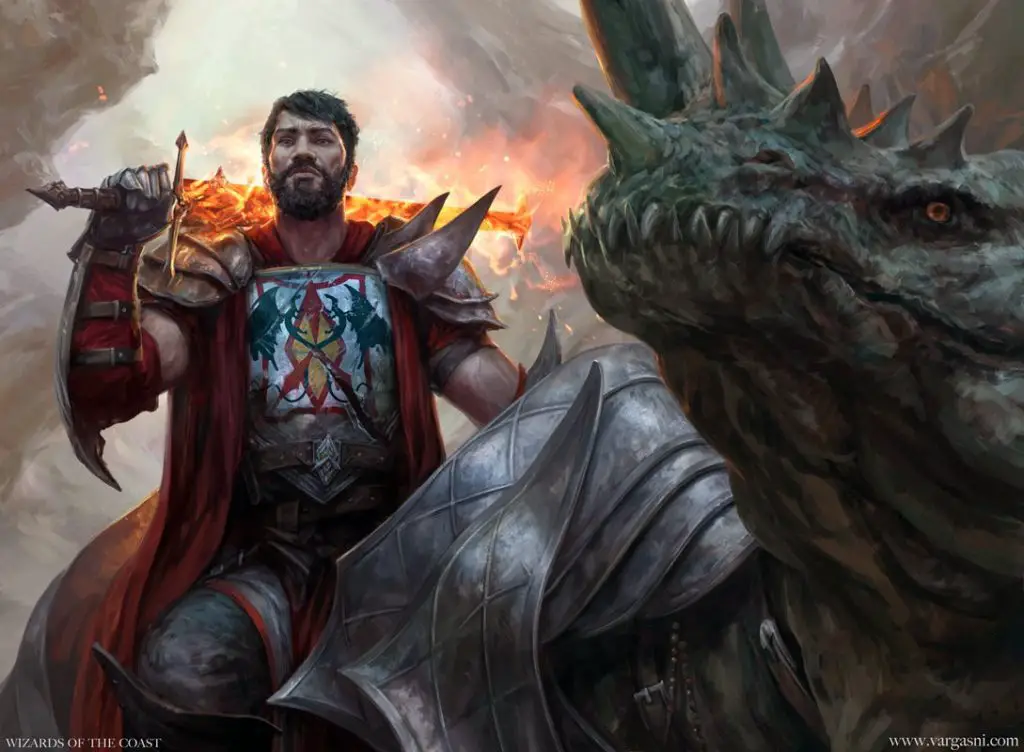
Eldritch Knight Fighter Features 5e
Mixing masterful combat prowess and magic is what the Eldritch Knight Fighter is all about.
As you gain levels in this subclass, your spellcasting and how you weave it into your fighting technique gets increasingly more potent.
Your Intelligence score will need to be a priority for you.
However, you don’t necessarily need to entirely focus on it. After all, you’ll still need to invest points in your Strength/Dexterity (whichever works best for your build) and your Constitution!
Generally speaking, an Intelligence score of 14 (maybe 16) should do you just fine.
The features that you gain will help you be able to both make melee attacks and cast spells in the same turn.
However, your bonus action will find itself in very high demand. Because of that, I’d recommend avoiding Two-Weapon Fighting so that you have fewer options all competing for your bonus action.
Related: Determining Ability Scores in D&D 5e
Weapon Bond (Level 3)
In addition to gaining spellcasting at level 3, Eldritch Knight Fighters also gain the Weapon Bond feature.
With this, you’ll never have to worry about being disarmed!
You learn a ritual that creates a magical bond between yourself and one weapon. You perform the ritual over the course of 1 hour, which can be done during a short rest. The weapon must be within your reach throughout the ritual, at the conclusion of which you touch the weapon and forge the bond.
Once you have bonded a weapon to yourself, you can’t be disarmed of that weapon unless you are incapacitated. If it is on the same plane of existence, you can summon that weapon as a bonus action on your turn, causing it to teleport instantly to your hand.
You can have up to two bonded weapons but can summon only one at a time with your bonus action. If you attempt to bond with a third weapon, you must break the bond with one of the other two.
This is ultimately one of those “nice to have, but rarely needed” kind of features.
Situations where you have been disarmed and are being held captive, for example, might happen. However, they’re pretty rare.
It could be useful if you are trying to appear unarmed, though.
Perhaps you’re trying to get information from a paranoid informant who won’t meet unless the party is unarmed. If this ends up being a trap, you’ll be able to quickly summon your weapon back to your hand.
Similarly, this can be useful if you enjoy throwing your weapon at enemies. But I’d imagine you’ll get better use out of your spells than throwing swords…
War Magic (Level 7)
When deciding between casting a spell or swinging your weapon, War Magic lets you do both!
This feature is pure value for your action economy. You’ll be hacking, slashing, and blasting your way through the enemy formation with ease!
When you use your action to cast a cantrip, you can make one weapon attack as a bonus action.
While there’s definitely value in using a cantrip like Fire Bolt to blast an enemy that’s out of your melee range, this works especially well with two spells in particular.
Both Booming Blade and Green Flame Blade may as well be required spells for the Eldritch Knight Fighter. They’re that good and their synergy with this subclass is like peanut butter and jelly or macaroni and cheese.
With these, you’ll use your action to attack while casting either BB or GFB. Then you get another attack in with your bonus action thanks to War Magic.
GFB will let you spread some extra damage to nearby targets while BB will ensure that your enemy is in for extra damage if they move.
Just note that this feature means you’ll have to make some decisions with your bonus action.
While you’ll generally want to use War Magic, there will be times when you’ll want to use your bonus action for your Second Wind feature instead.
Personally, I’d stick with either a Great Weapon build or the classic sword and shield. You won’t have the use of your bonus action to justify dual wielding.
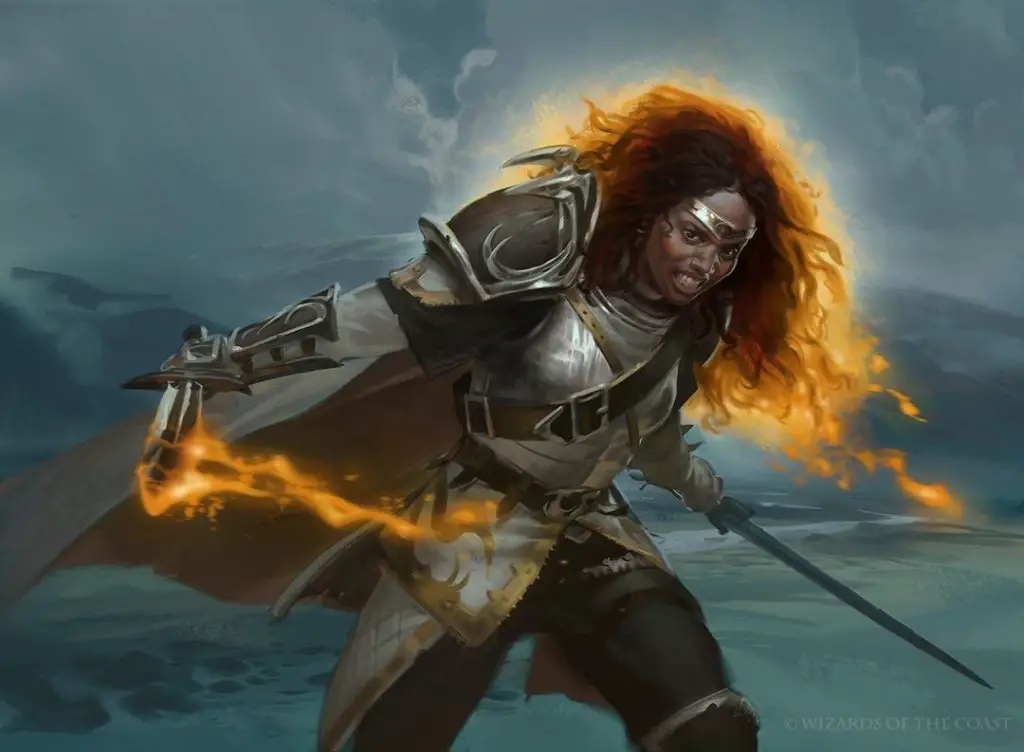
Eldritch Strike (Level 10)
Remember how we made the distinction earlier that an Eldritch Knight Fighter is not a melee Wizard?
While the Eldritch Knight does need to invest in their Intelligence score, their spell save DC simply is not going to be as high as a Wizard’s.
After all, the Wizard focuses primarily on their Intelligence score while the Eldritch Knight also has to invest in their Strength/Dexterity (depending on their build) and Constitution.
Well, the Eldritch Strike feature is here to bridge that gap!
When you hit a creature with a weapon attack, that creature has disadvantage on the next saving throw it makes against a spell you cast before the end of your next turn.
Making saving throws with disadvantage can be pretty rough. Thanks to War Magic, you should have no trouble setting yourself up for your following turn.
So, on turn one, you cast a cantrip with your action. That then lets you make a weapon attack with your bonus action. If that hits, Eldritch Strike is ready to shine.
On your next turn (or possibly the same one if you decide to use Action Surge), you can use something like Hold Person which will be DEVASTATING to the enemy.
Since they’re rolling at disadvantage for the initial save, it’s much more likely they’ll be left helpless until they can eventually beat the saving throw. In the meantime, you and your allies will have no trouble dogpiling them while they’re paralyzed.
Of course, if you’re feeling extra cheeky, you can use a cantrip like Mind Sliver to add yet another penalty to their saving throw!
Used strategically, Eldritch Strike and War Magic can make for an incredibly powerful “one-two punch”!
Arcane Charge (Level 15)
Having extra mobility is never a bad thing.
Whether you’re using it to fall back to safety or get the jump on an enemy, Arcane Charge is here to help!
You gain the ability to teleport up to 30 feet to an unoccupied space you can see when you use your Action Surge. You can teleport before or after the additional action.
Even if this was just giving you the benefit of the Dash action, it would be great.
But as a teleportation ability, your options for getting around hazards, terrain, and other enemies are limitless. As long as you can see where you’re going, you’re all good!
Also, note that this is not a spell which means you don’t have to worry about a pesky enemy caster trying to counterspell your getaway if things are getting sticky!
This feature is short, sweet, and always incredibly useful to have ready!
Improved War Magic (Level 18)
Speaking of short, sweet, and useful, we finally come to the Eldritch Knight Fighter’s capstone feature: Improved War Magic.
Fitting with the name, this builds on the same principles as the War Magic feature.
When you use your action to cast a spell, you can make one weapon attack as a bonus action.
You’re no longer limited to just cantrips to get the “one-two punch” between War Magic and Eldritch Strike going.
This is a feature that builds as the combat goes on.
Turn One, cast a spell then smack an enemy. That enemy has disadvantage when saving against the spell you cast on them on Turn Two.
Since you just cast a spell on Turn Two, have another attack which means… more disadvantage if it hits!
You get the idea.
Of course, this can also be useful for something like dropping a huge Fireball and then quickly mopping up whoever is still standing!
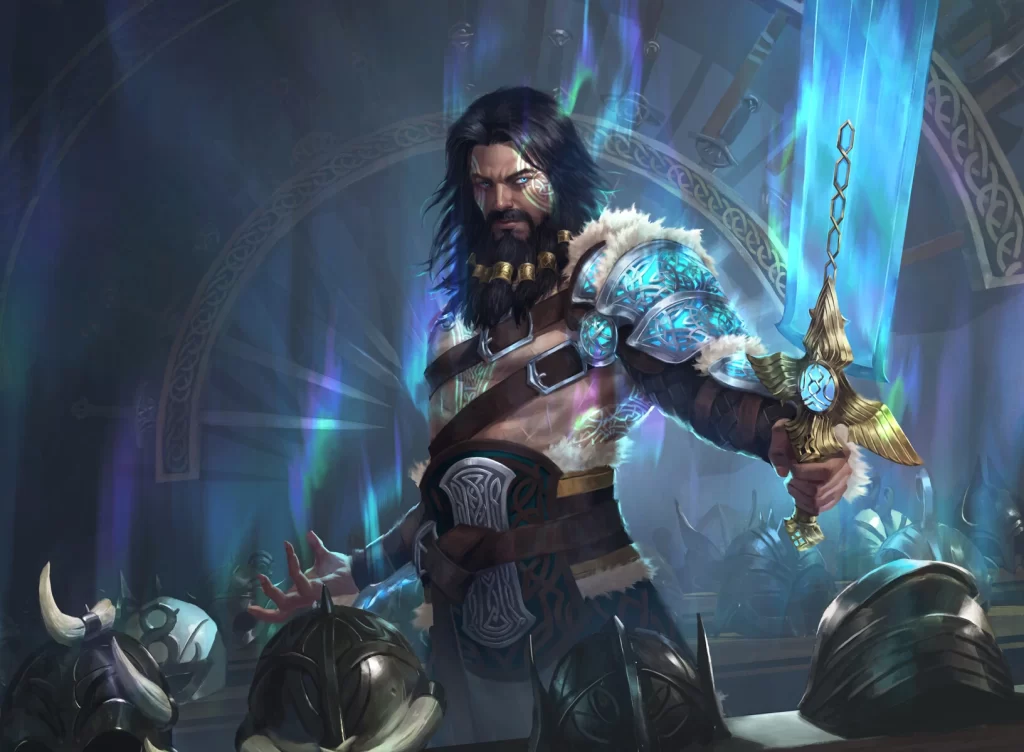
Connections
Eldritch Knights can come from a multitude of backgrounds, though they especially lean heavily towards having a military background.
Mixing their expertise in martial combat with magic, such a character would have likely been a distinguished soldier.
With so much potential, the opportunity to further enhance their combat capabilities with magic could make sense as a type of special unit within the military.
To qualify for such training, someone would have to show remarkable promise both physically and mentally.
While an Eldritch Knight could very well have learned their magic from a Wizard, they learn their spells differently. Instead of having to keep a spellbook handy, they instead focus on learning a smaller number of spells but committing them to memory.
If you’re connecting an Eldritch Knight Fighter to the party and world, start by exploring where and how they’ve learned their skills. After all, it’s hard work to master this training!
Perhaps they served as an Eldritch Knight as a kind of “special operations” unit. What has led them to now meet the party and engage with the adventure’s plot hooks?
Is the Eldritch Knight Fighter Good?
The Eldritch Knight Fighter has been a powerhouse subclass for all of D&D 5e’s existence. The options and strategies that come with effectively mixing martial prowess with spellcasting are virtually limitless.
While this isn’t a concept that’s exclusive to this subclass, the Eldritch Knight Fighter is perhaps the most accessible “Gish” type character to play. For those who want to play such a character but aren’t deeply familiar with how 5e works as a system, it’s an excellent pick.
Just because the Eldritch Knight is a more simplified take on a “Gish” character, that doesn’t mean it’s any less effective.
Harnessing both evocation and abjuration magic to devastating effect, the Eldritch Knight Fighter is more than capable of holding its own!
But even as a slightly more “on rails” version of a “Gish”, this can still be a tricky subclass to play well. You need to be familiar with both melee combat and the rules of spellcasting to make it work.
That means that newer players might find this to be an overwhelming subclass option.
But there’s no arguing against how effective (and epic!) the Eldritch Knight Fighter is. Once you can master your positioning and spell selection, there’s seemingly no stopping them!
Recommended: Ranking EVERY Fighter Subclass in D&D 5e!
Conclusion – Eldritch Knight Fighter in D&D 5e
But that’s a wrap on this guide to the Eldritch Knight Fighter in D&D 5e.
I hope you’ve found this article helpful. This is one of the more interesting and technical subclasses in D&D 5e, so feel free to reach out in the comments if you’ve still got questions that I can help with!
Until next time!
Don’t forget to sign up for the Tabletop Joab newsletter! It’s the best way to get all the latest player guides, DM Tips, news, reviews, and more for D&D 5e right to your inbox!
You can also follow Tabletop Joab on Facebook and Twitter.
If you found this article helpful and want to support the site, you can buy me a coffee here! (It’s not expected, but very appreciated!)

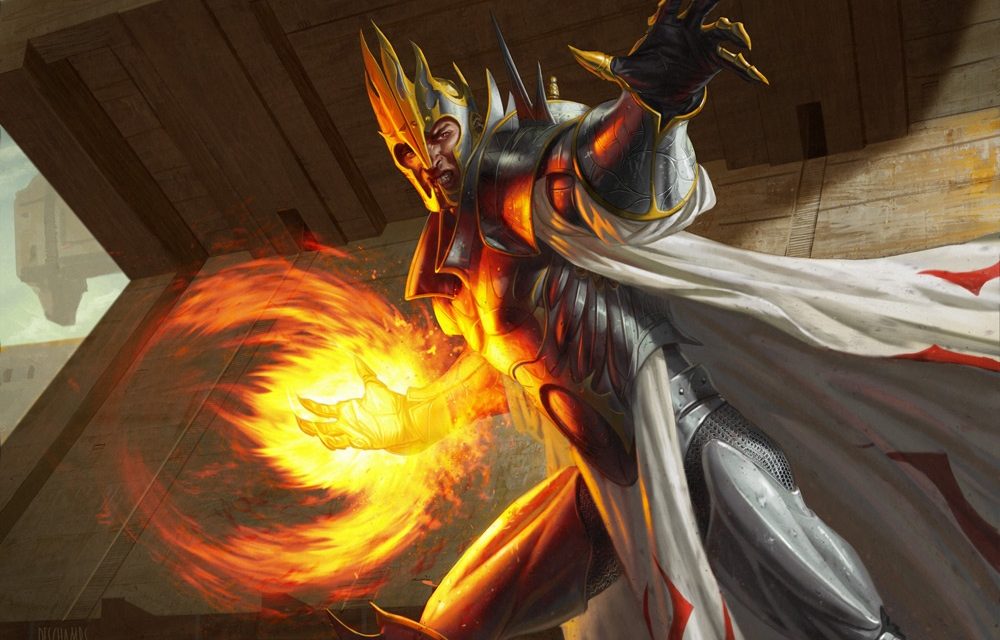

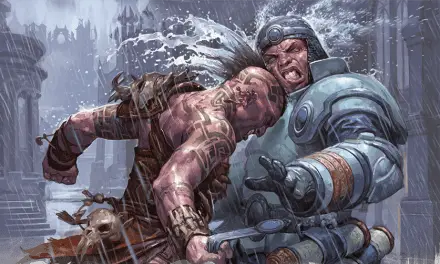
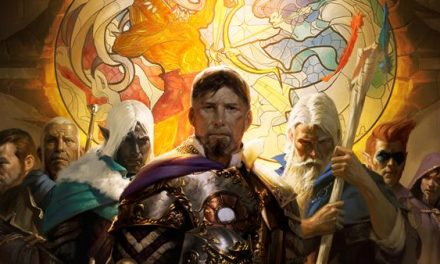

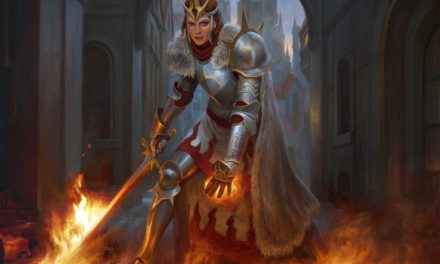



I’ve played with an Eldritch Knight; his favourite combination was Great Weapon Master + Green-Flame Blade. And he was the only in our party capable of fighting Strahd one-on-one.
…and lose, of course. But not in a single round.
Also I should say that Arcane Charge + friendly Archfey Warlock = very frustrated enemies, going mad from teleports.
Do I understand correct that a weapon attack for War Magic does not let you use Extra Attack?
About the connections: an Eldritch Knight may also be a follower of Mystra, Azuth, Kereska or a similar deity. Not pious enough to become a Cleric or a Paladin, but studious enough to combine martial mastery with mystical knowledge, performing a sacred duty.
Hi V-Z!
That definitely sounds like an epic character to be able to last more than a single round against Strahd in a 1v1 fight!
You are correct that War Magic doesn’t let you use Extra Attack. This is because Extra Attack is specifically triggered by taking the Attack action. With War Magic, you’re simply getting to make an attack with your bonus action after using a cantrip with your Action.
However, that’s where Action Surge can come in if you need it! 🙂
Also, great suggestions for connections!
Well, this stresses careful spell selection even more. At high levels a spell should be quite influential to compensate for the loss of several attacks. Somewhat ironic that a Fighter has to be even more thoughtful about spell selection than a Wizard or Sorcerer.
One more for connections: I have an Eldritch Knight in my Midgard party now. He is an acolyte of the temple of Thoth-Hermes; having not a scientific enough mind, he has chosen the path of the warrior, but has got quite an education. For me it was quite sufficient; after all, a follower of the God of Knowledge is quite suitable for wielding magic.
That’s a very good idea and certainly makes sense.
There seems to be this idea that a character can be strong or smart. In the case of such an Eldritch Knight, however, why not both?!
Of course. Actually, if we look at the Fighter subclasses, we may notice an interesting trend. Intelligence isn’t vitally important mechanically for a Fighter. But conceptually?
I really cannot imagine Battlemaster, Eldritch Knight, Samurai, Rune Knight and Psi Warrior with negative Intelligence. And it’s the half of official archetypes! So, it is quite correct for a Fighter to have brawn driven by brains.
(Interesting enough, in my newest group a Fighter usually takes lead in negotiations. We have a Paladin – but as a foreigner, he is quite bad with the language, so his high Charisma mostly gives an attitude bonus,not a conversational one).
Eldritch Knight is cool and Powerful. His main Power comes from the Shield Spell (unbelievably Hight AC) and the melee Cantrips.
The part where I am disapointed is the limited Spellist, especilly Evocation, where you get the attack Spells far too late to be a gamechanger. I would rather have more buffs or utility spells and do damage with the blade..
Hi Rocketman!
Yeah, the limited spell list is the biggest hindrance for what I think most people want from an Eldritch Knight.
Personally, I’m more of a fan of the Bladesinger Wizard for exactly the reason that you described. While both mix martial combat and spellcasting, I think the Bladesinger’s ability to bring more arcane utility to the table helps it better bring the idea of a character that does both.
Though I can also see where some prefer the Eldritch Knight’s toughness.
I’m currently playing an EK in my long-term campaign (the ever-grump Tobias), and the ridiculous armour class stacking is definitely the USP for the subclass. Having said that, they’re also quite customisable as subclasses go – STR or DEX, GWF or sword-and-board, etc. Tobias took ritual casting at first level and just multiclassed into ahemDivinationWizardahem, partly to get around spell school restrictions, but also maaaaybe because Portent…
Hi OwlbearCamus!
Oh, there are definitely some fantastic build options for Eldritch Knights. It’s far from a one-trick pony!
As for multiclassing, Divination Wizard is such an incredibly powerful option. Portent dice are so freaking awesome!